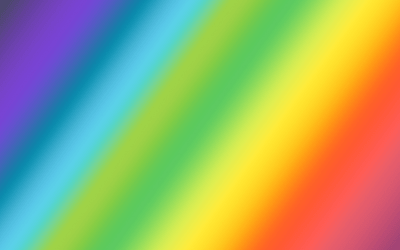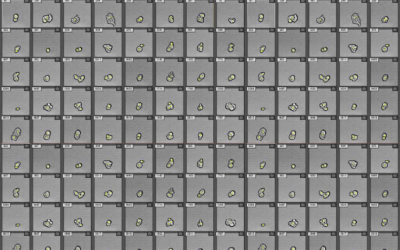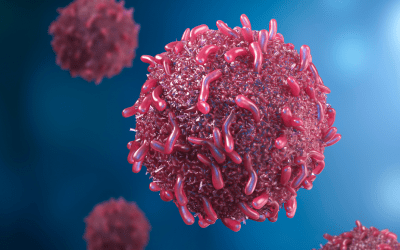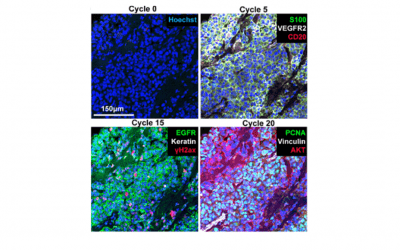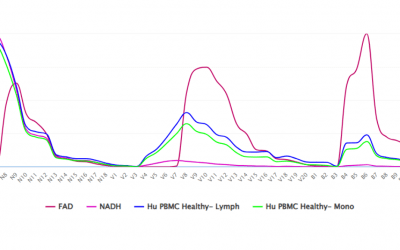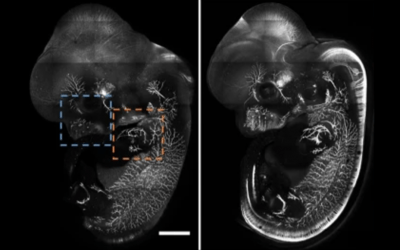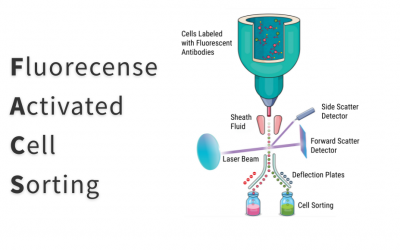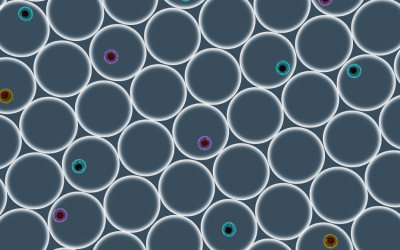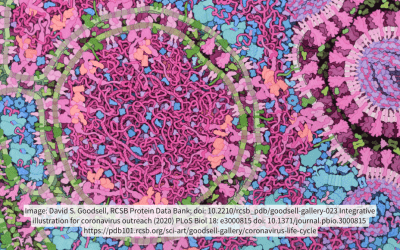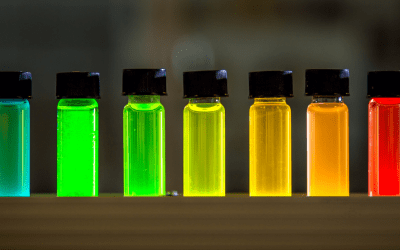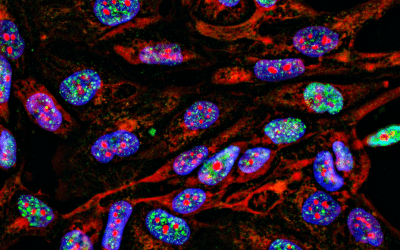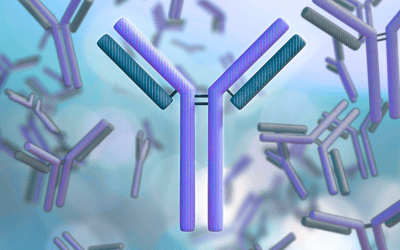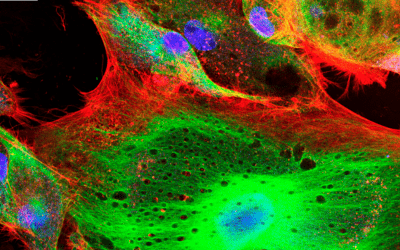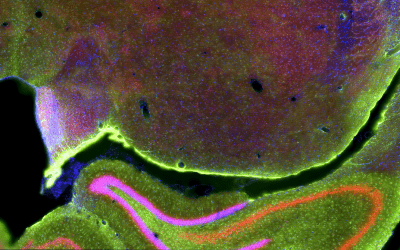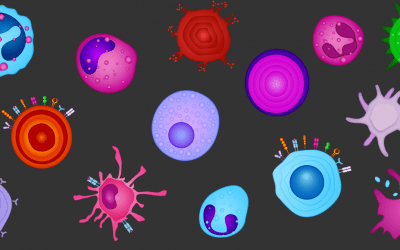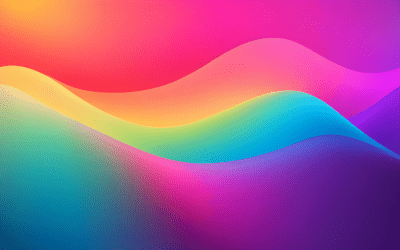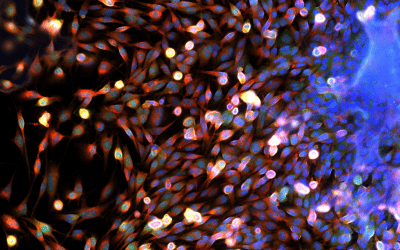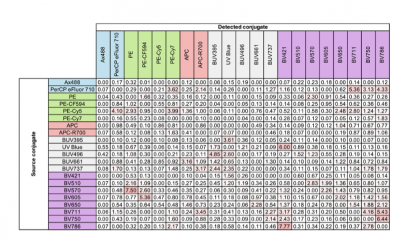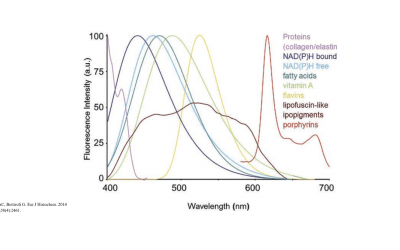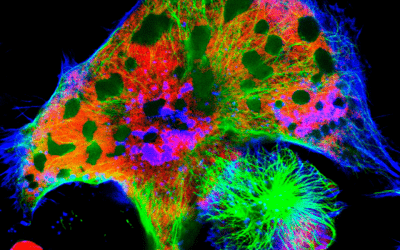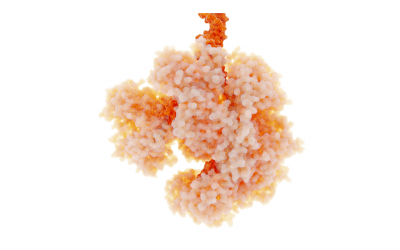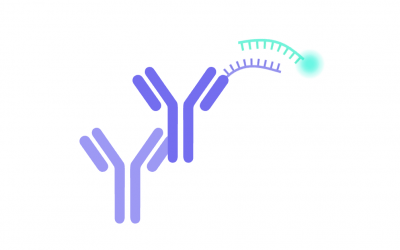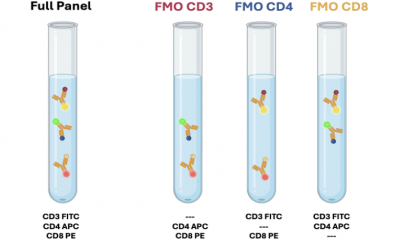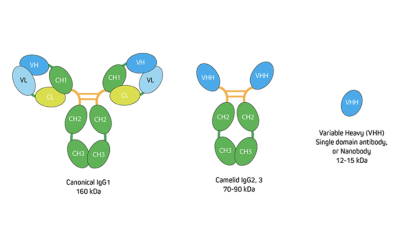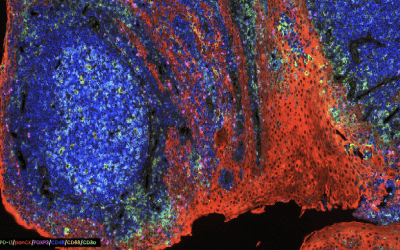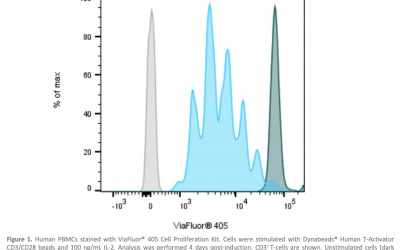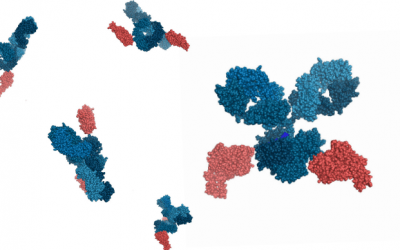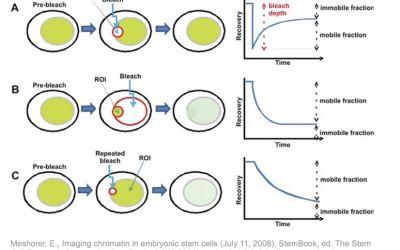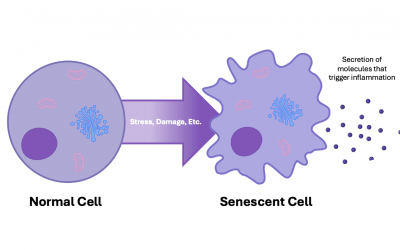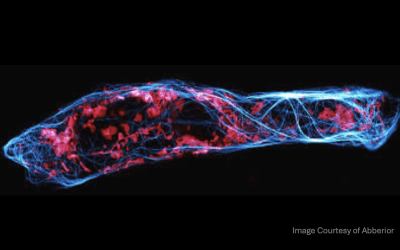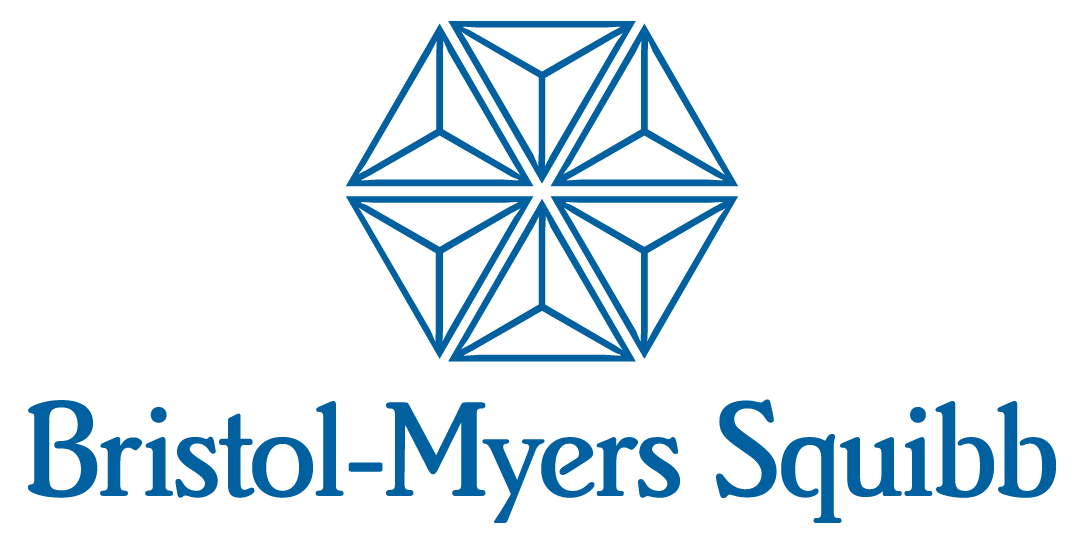Articles
FluoroFinder News & Updates
From flow cytometry research and experimental design trends to FluoroFinder tool updates and industry applications, we explore it all in our blog.
New Dyes of 2025 & Expansion of Spectral Dyes
Every year, the number of fluorescent dyes available for scientific research continues to grow, and 2025 has been no exception. Novel fluorochromes are expanding the limits of both traditional and spectral flow cytometry, as well as advancing spatial biology...
Imaging Flow Cytometry
For decades, traditional flow cytometry has been the dominant technique for analyzing single cells within large, heterogeneous populations. However, imaging flow cytometry (IFC) is rapidly becoming more mainstream due to the advantages that it can provide. We spoke...
Advancing Cytometry Technology in Oncology
Guest Authored By: Kelly Lundsten I often think about a concept called the pinball effect. Distilled, it is the knowledge of all of the small changes made by people whose names are remembered, or not, who optimized a process or invented a new chemistry or asked “why”...
Automation & Microfluidics in Cyclic Immunofluorescence
Cover Image: Selected images of a melanoma specimen subjected to 20 cycles of Cyclic IF after cycles 0, 5, 15 and 20. Used without modification under Creative Commons Attribution 4.0 International License from (Lin, 2018) Figure 4G. Spatial biology aims to...
New and Emerging Spectral Flow Cytometry Instrumentation
Spectral flow cytometry improves on traditional flow cytometry by capturing the entire emission spectrum of each fluorochrome, rather than isolating specific wavelengths. This enables more precise resolution of overlapping fluorochromes and greater flexibility in...
Autofluorescence in Flow Cytometry
Guest Authored By: Kelly Lundsten Every living organism on earth has evolved to either harness or protect itself from the energy of the sun. Organic molecules capture energy and conduct it along a circuitry of electron pairs shared by double bonds that compose various...
Clearing Tissue for Microscopy: Part 2 – Hydrophilic Methods
Cover Image: E12.5 whole mouse embryo was immunostained with neurofilament antibody and cleared with RTF. Scale bar, 1000 μm. Used without modification under Creative Commons Attribution 4.0 International License from (Yu T. Z., 2018) Figure 4a. As explained in last...
All About FACS
Fluorescence-activated cell sorting (FACS) is an advanced form of flow cytometry that allows researchers to isolate specific cell types from a heterogeneous sample. This article explains the basic principles of FACS and describes some common research applications. It...
Clearing Tissue for Microscopy: Part 1 – Dehydration Protocols
Cover Image: Imaging of the whole-brain vasculatures at sub-cellular resolution. Brains of adult Tie2-Cre;tTAflox;tetO-H2BGFP (TTH) mice were cleared using the PEGASOS method and imaged with a tiling light-sheet microscope. g An X-Z optical slice acquired at the...
Blockers, Buffers, and Beyond: Supplementary Reagents for Flow Cytometry
When selecting reagents for flow cytometry, fluorescently-labeled antibodies are likely the first products that come to mind. However, supplementary reagents are also important and it pays to investigate what’s on offer. This article looks at some of the different...
Flow Cytometry of EVs and Other Small Things
Guest Authored By: Vera Tang, Ph.D. Interest in the study of extracellular vesicles has increased exponentially over the past two decades due to the important role they play in inter-cellular communication, as biomarkers of disease, and vehicles for drug delivery....
Fluorophore Families
So many new fluorophores have been released in recent years, it can be hard to keep track of their similarities or novelty. Sometimes, a company will create a new brand name for a fluorescent chemistry that is already commonly used, which can make sifting through the...
Antibody Conjugation Techniques
Conjugating antibodies to other molecules is a common technique used for drug delivery, changing solubility, attaching to solid substrates (for purification or assays), and visualizing the antibody using fluorescent, magnetic or gold nanoparticles. Western blots,...
Cell Mimics In Cell Manufacturing Applications
Flow cytometry assays are integral to cell manufacturing, where they have an essential role in safeguarding product quality and function. However, the types of controls used for flow cytometric characterization are changing as researchers realize the advantages of...
A Look at High-Content Imaging
High-content imaging (HCI) combines automated fluorescence microscopy with advanced image analysis to study cellular samples. This article looks at the key steps in a typical HCI workflow and explores some common applications. It also highlights some of the leading...
Advantages of Recombinant Antibody Development
Recombinant antibody technology is addressing known limitations of traditional antibody molecules and opening up new areas of scientific research. We spoke with Michael Fiebig, Ph.D., Chief Scientific Officer at Absolute Antibody (a Vector Laboratories Company), Mary...
The Rise of Spatial-Omics Technologies
Single-cell analysis techniques such as fluorescence-activated cell sorting (FACS) and single-cell DNA and RNA sequencing have broadened researchers’ understanding of cell biology in health and disease by enabling the study of rare cell types and phenotype variations...
Latest Developments in Flow Cytometry
Flow cytometry continues to become more powerful with the development of novel instrumentation and reagents. Here, we highlight some of the latest advances in the field and look at how they can benefit your research. Thermo Fisher Scientific Launches the Invitrogen™...
The Discovery and Evolution of Fluorescent Proteins
It has been over 60 years since Osamu Shimomura et al. discovered Green Fluorescent Protein (GFP)1. Since then, the color palette for fluorescent proteins has been extended to span blue through to far red, and even includes proteins that are capable of exhibiting...
Steric Effects in Multiplexed Immunofluorescence
Structural biology is focused on mapping where proteins, lipids and other biological molecules are located in cells and tissues in space. Researchers often use immunofluorescence labelling techniques that have been around for decades to visualize biomolecules and...
Definitive Phenotypes in Flow Cytometry
Standardization may not be the most exciting topic in biomedical research, but in an era where we lament the lack of reproducibility and distribute blame to reagents, sample prep, and general technical know-how, standardization is something every researcher should...
2D vs 3D Cell Cultures
Two-dimensional (2D) cell cultures represent a cornerstone of scientific research due to their relative simplicity and the establishment of standard techniques over time. In recent years though, 3D cell culture models have risen in popularity for the more...
Automated Voltage Settings for Optimal Assay Performance
Back before spectral cytometry, flow cytometers were composed of optical configurations with individual photomultiplier tubes (PMTs) or avalanche photodiodes (APDs) behind filters centered at the peak emission of different fluorophores. Many might call these...
Multiplexing with Spectral Confocal Fluorescence Microscopy
Biologists are very interested in how proteins, lipids and other compounds are organized and interact in systems. Very few organizational details can be gained by using standard transmission-based light microscopy, even when employing phase or other contrast-enhancing...
Spectral Spillover in Flow Cytometry
What is Spectral Spillover? In flow cytometry, spectral spillover occurs when the emission of one fluorophore overlaps the optimal detection channel of a different fluorophore. Spillover is a concern in flow cytometry, as it can make fluorescent signatures difficult...
New Fluorescent Dyes of 2024
Fluorescent detection is one of the most powerful tools available to researchers. Not only does it offer the advantages of high sensitivity, simple operation, and the capacity for multiplexing, but it also allows for capturing dynamic biological processes in...
Multiphoton Microscopy
The cerebral cortex is between 2-4 millimeters thick depending on the region of the brain. In one cubic millimeter of human temporal cortex, there are 57,000 cells, 150 million synapses and 230 millimeters of blood vessels1. The typical thickness of a tissue slice for...
Autofluorescence in Flow Cytometry
There is light inside our cells. Each cell relies upon a unique array of vitamins, metabolic cofactors ,and aromatic amino acid-based proteins. Many of these molecules exhibit unique fluorescent properties, collectively known as endogenous autofluorescence. The...
Amplification and Background Reduction Techniques
One of the most common complaints when using fluorescently-labeled antibodies for staining biological samples is that the specific signal is too low. Another is that the background is too high, obscuring detection of the target. We spoke with Eric Torres, Ph.D.,...
Recombinant Antibodies in Flow Cytometry
Recombinant antibodies have become indispensable tools for flow cytometry due to the advantages that they offer over traditional polyclonal and monoclonal antibodies. We spoke with Mathilde de Jong, Ph.D., Product Manager for Flow Antibodies at Miltenyi Biotec, and...
DNA-PAINT and Related Methods
DNA-PAINT (DNA points accumulation for imaging in nanoscale topography) is a super-resolution microscopy technique that exploits the transient binding of fluorescently labeled DNA probes. It has been widely adopted for scientific research owing to its accessibility,...
Flow Cytometry Controls
Flow cytometry requires more controls than most other immunoassay techniques because it must account for more potential sources of variation. In addition to experimental controls, which are used to verify the specificity of any staining and ensure assay consistency,...
Camels, Lamprey, and Chickens, Oh My!
It has been almost half a century since Georges Köhler and Cesar Milstein first described hybridoma technology, which is still widely used for producing monoclonal antibodies today. Over the years, the methodology has evolved and alternative approaches have been...
Cyclical Immunofluorescence Platforms and Reagents
When using established methods for immunofluorescent staining of tissue sections, the need to avoid spectral overlap limits the number of markers that can be detected. This can mean that important information is missed, which is of particular significance when working...
Functional Probes for Flow Cytometry
Functional probes are essential tools for flow cytometry, with utility for studying a wide array of cellular processes. Here, we speak with Alexis Madrid, Ph.D., Assistant Director of Bioscience at Biotium and Chris Manning, Associate Director, Flow Cytometry at Cell...
What Makes a Good Conjugate…Great
Author: Columbia Biosciences Background: Over the course of their careers, most researchers in the life sciences or associated fields will perform an experiment or assay that uses a conjugate. These include fluorescent conjugates in flow cytometry (FCS) or...
FRAP (Fluorescence Recovery After Photobleaching)
Fluorescence recovery after photobleaching is a technique for characterizing the mobility of cellular molecules Fluorescence recovery after photobleaching (FRAP), also known as fluorescence redistribution after photobleaching, is a microscopy-based technique...
Cellular Senescence: Advantages, Disadvantages, and Challenges for Analysis
Cellular senescence has important roles in embryogenesis, tissue repair, and tumor suppression. However, prolonged senescence can be detrimental to human health, contributing to the development of conditions such as cancer and various age-related pathologies....
Functional Probes for Live-Cell Imaging
Cellular function encompasses the basic processes a cell must undertake to do it’s assigned job. That could include protein production, enzymatic degradation, proliferation, apoptosis, cell signaling, mitochondrial respiration, buffering reactive oxygen species, etc,...
Multiparameter Fluorescence Imaging
Multiparameter fluorescence imaging offers many advantages for scientific research. Not only does it use significantly less sample than generating a series of single-analyte images, but it also saves time and can provide a more complete picture of the system in...
